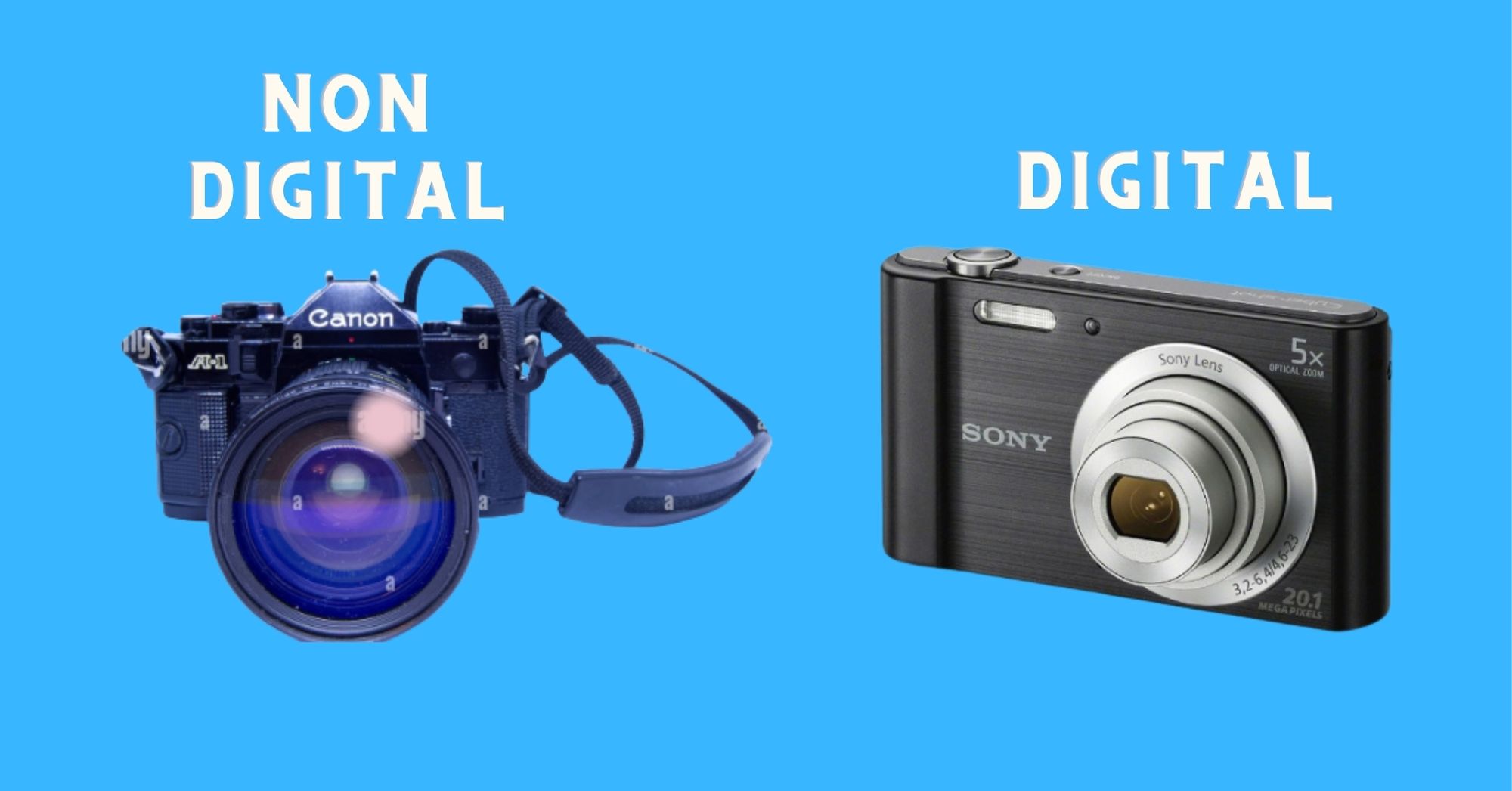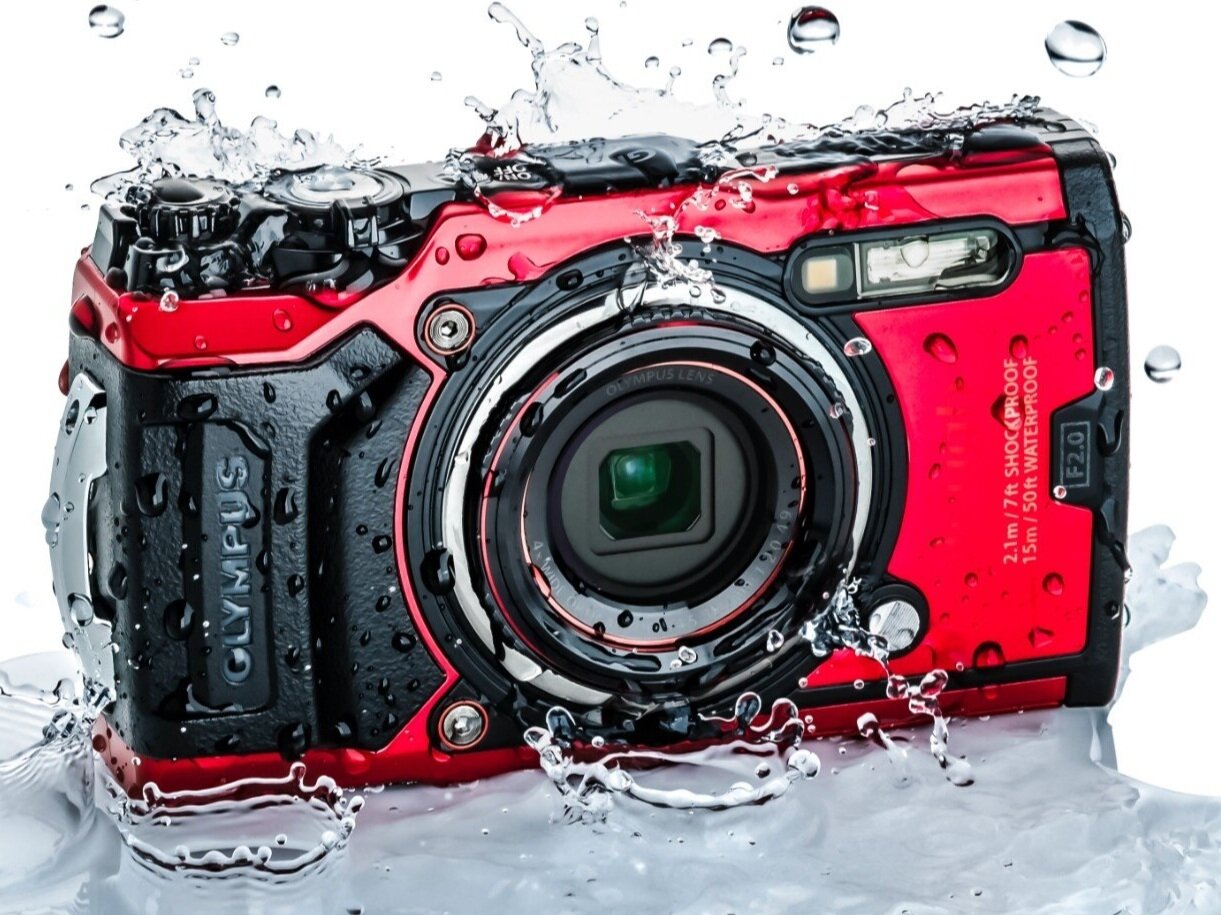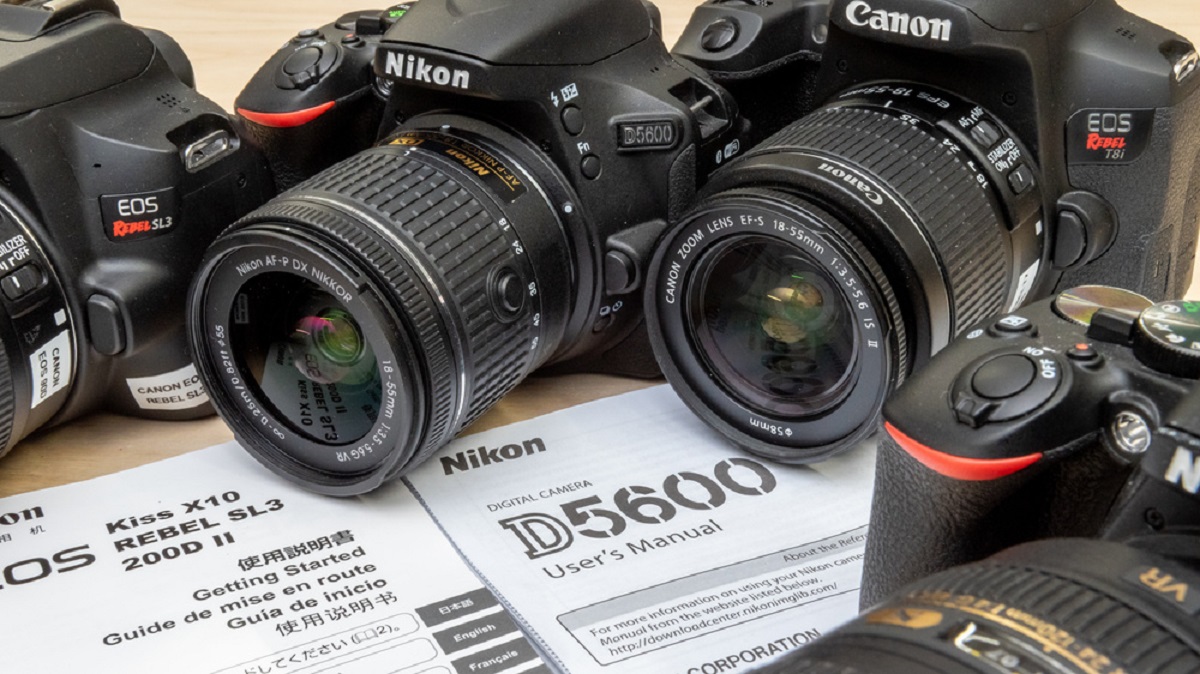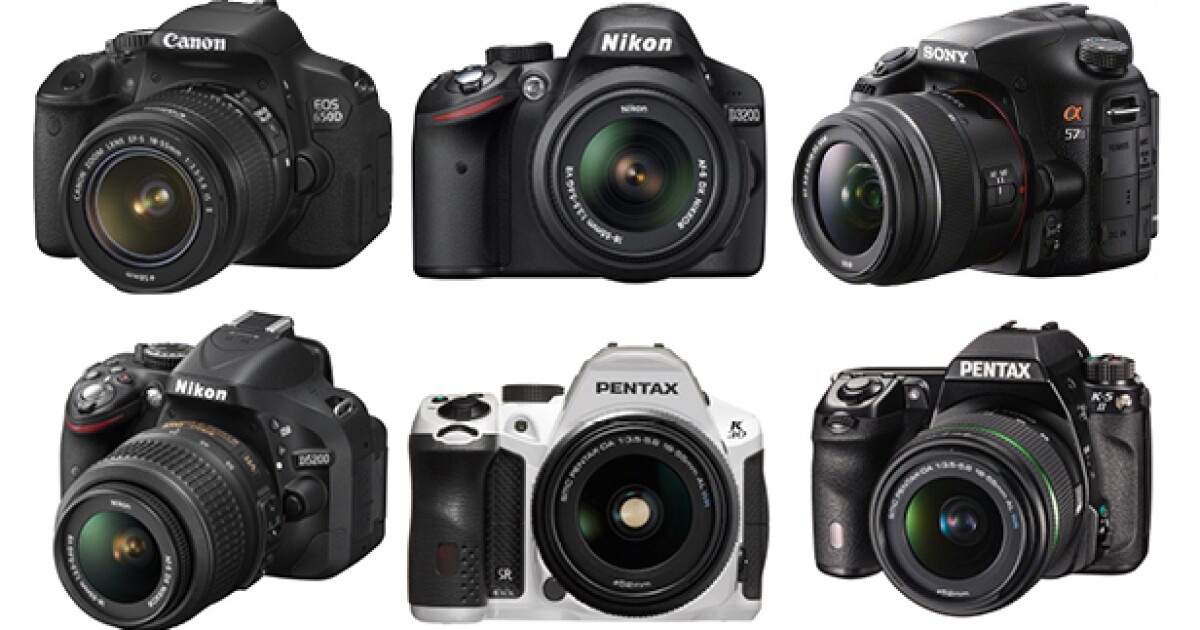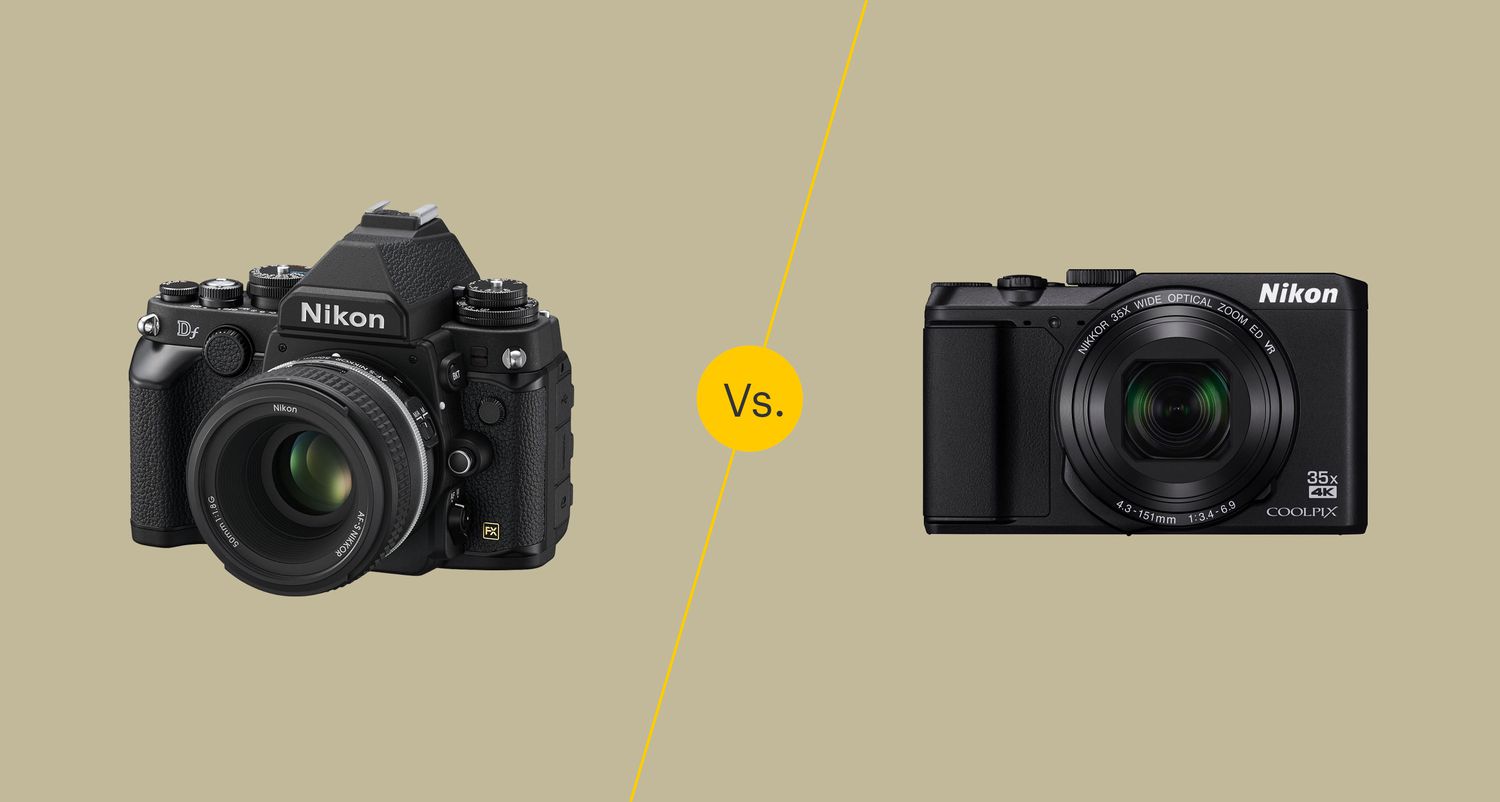Introduction
The rapid advancements in technology have revolutionized the field of photography, particularly with the development of digital cameras. These devices have replaced their nondigital counterparts in many aspects, offering a multitude of features and advantages that were previously unimaginable.
A nondigital camera, also known as a film camera, uses a film strip to capture and store images. On the other hand, a digital camera captures and stores photographs in a digital format directly onto a memory card. The fundamental difference between these two types of cameras lies in the way they process and store images.
In this article, we will explore and compare the key differences between nondigital and digital cameras. We will delve into various factors, including image quality, storage capabilities, shooting and editing capabilities, cost and convenience, battery life, durability, and lifespan. By understanding these differences, you will be equipped with the knowledge to make an informed decision when choosing between a nondigital and a digital camera.
Definition and Differences Between Nondigital and Digital Cameras
Before we delve into the differences between nondigital and digital cameras, it’s important to understand their respective definitions. A nondigital camera, also known as a film camera, operates by using a physical film strip to capture and store images. This film needs to be developed and processed before the images can be viewed or printed. On the other hand, a digital camera captures and stores photographs in a digital format directly onto a memory card. These images can be instantly viewed, edited, and shared through various electronic devices.
The primary difference between these two types of cameras lies in the way they process and store images. Nondigital cameras rely on the chemical process of developing and printing film to produce the final image. This film, typically made of plastic coated with light-sensitive chemicals, captures the light and forms an image when exposed to it. The cameras contain a mechanical shutter and aperture mechanisms to control the amount of light that reaches the film.
Digital cameras, on the other hand, use an image sensor, usually a charge-coupled device (CCD) or a complementary metal-oxide-semiconductor (CMOS), to convert light into an electrical signal. This signal is then processed and converted into digital data. The digital image is stored on a memory card, allowing for immediate preview, editing, and sharing of the photographs.
In addition to the difference in image processing and storage, there are several other notable distinctions between nondigital and digital cameras. Nondigital cameras generally have a manual focus mechanism and limited shooting capabilities, while digital cameras often offer autofocus and a wide range of shooting modes. Furthermore, digital cameras provide the convenience of instant image review and the ability to delete unwanted photos on the spot, saving time and resources.
While the traditional charm and tangible results of nondigital cameras continue to attract enthusiasts, the technological advancements and flexibility provided by digital cameras have made them the preferred choice for most photographers. In the following sections, we will explore the differences in resolution and image quality, storage and memory, shooting and editing capabilities, cost and convenience, battery life and power source, durability, and lifespan, for nondigital and digital cameras.
Resolution and Image Quality
One of the key differences between nondigital and digital cameras lies in the resolution and image quality they produce. Resolution refers to the amount of detail that can be captured in an image, often measured in megapixels (MP). Nondigital cameras typically have a lower resolution compared to digital cameras.
Nondigital cameras capture images on a physical film strip, which has a limited capacity for storing detail. The film’s emulsion and grain structure determine the level of detail that can be recorded. Generally, a higher-quality film with finer grain will produce sharper and more detailed images. However, even the best film cannot match the resolution capabilities of digital cameras.
Digital cameras, in contrast, offer a wide range of resolutions, from a few megapixels to as high as 100 megapixels in professional-grade cameras. With each increasing level of resolution, digital cameras can capture finer details and produce sharper images. This high resolution is particularly beneficial for photographers who need to print large-format images or crop photos without losing too much detail.
In terms of image quality, digital cameras have the advantage of capturing images with better color accuracy and low noise levels. The image sensor of a digital camera can process and adjust the captured data to enhance the overall quality of the image, resulting in more true-to-life colors and reduced image noise. Additionally, digital cameras often provide various image settings and filters that allow photographers to further fine-tune and customize the final image.
While nondigital cameras may have a certain nostalgic appeal with their unique aesthetic and film characteristics, the overall image quality and resolution capabilities of digital cameras far surpass that of their nondigital counterparts. The ability to capture and reproduce high-resolution images with excellent color accuracy and low noise levels has made digital cameras the preferred choice for professional photographers and enthusiasts alike.
Storage and Memory
When it comes to storage and memory, there’s a significant disparity between nondigital and digital cameras. Nondigital cameras rely on physical film rolls to store images, while digital cameras utilize memory cards or internal storage.
Nondigital cameras capture images on a film strip, typically made of plastic coated with light-sensitive chemicals. Each roll of film has a limited capacity, allowing for a fixed number of photographs to be taken before the film needs to be replaced. Once the roll is fully exposed, it needs to be removed from the camera and sent to a lab for development. The developed negatives are then stored physically and can be used to print or reproduce the images at a later time.
Digital cameras, on the other hand, revolutionize the storage process by using memory cards or built-in memory to store images. These memory cards come in various capacities, ranging from a few gigabytes to several terabytes, offering ample space to store thousands of photos. The digital format allows for immediate image review and deletion, saving both time and resources. Moreover, digital images can be easily transferred to computers or other storage devices for backup or further editing.
Another advantage of digital cameras is the flexibility to change memory cards on the go. If the memory card gets full, photographers can simply replace it with a new one and continue shooting. This convenience is particularly beneficial when capturing images during important events or while traveling, where access to a lab for film development may be limited or time-consuming.
While nondigital cameras offer a tangible form of image storage with their physical negatives, digital cameras provide the convenience of versatile and expandable memory options. The ability to store a large number of images on a single memory card, the ease of image transfer and backup, and the ability to change memory cards as needed make digital cameras the preferred choice for photographers who require flexibility and convenience in their workflow.
Shooting and Editing Capabilities
When it comes to shooting and editing capabilities, digital cameras offer a wide range of features and functionalities that surpass what nondigital cameras can offer. The digital format allows for greater flexibility and control over the shooting process, as well as more advanced editing options.
Digital cameras often provide various shooting modes to cater to different scenarios and subjects. These modes include portrait, landscape, sports, night, and macro, among others. Each mode optimizes the camera settings to achieve the best possible results in specific shooting conditions. Additionally, digital cameras offer autofocus capabilities, making it easier to capture sharp and well-focused images. Some models even have advanced autofocus systems, utilizing multiple focus points to track and capture moving subjects accurately.
One of the significant advantages of digital cameras is the ability to instantly review and assess images on the camera’s LCD screen. This feedback allows photographers to make adjustments to composition, exposure, and other settings in real-time. With nondigital cameras, photographers need to rely on their skills and experience, as well as their knowledge of the camera’s settings, to capture the desired image.
In terms of editing capabilities, digital cameras provide unparalleled flexibility. Photographers can make adjustments to exposure, color balance, contrast, and other parameters directly on the camera. Some more advanced models offer in-camera editing features such as cropping, image filters, and even basic retouching tools. Furthermore, the digital format allows for non-destructive editing, meaning that the original image file remains intact, and any edits are saved as separate instructions or metadata.
Nondigital cameras, on the other hand, have limited shooting and editing capabilities. Photographers need to rely on their skills and knowledge of the camera’s settings to achieve the desired results during shooting. Editing options are also limited to physical manipulations during the development process and may require a skilled technician or specialized equipment.
Overall, the shooting and editing capabilities of digital cameras empower photographers with more control and flexibility over their creative process. The availability of shooting modes, autofocus capabilities, instant image review, and a wide range of editing options make digital cameras the preferred choice for those who seek versatility and the ability to fine-tune and enhance their photographs.
Cost and Convenience
When considering the cost and convenience aspects, there are notable differences between nondigital and digital cameras. Both factors play a crucial role in the decision-making process for photographers.
In terms of cost, nondigital cameras have a lower upfront cost compared to digital cameras. Film cameras are commonly available in a wide range of prices, including affordable options for beginners. However, it’s important to consider the ongoing expenses associated with film cameras. These include the costs of purchasing and developing film rolls, as well as the expense of printing physical copies of the photographs. Over time, the cumulative cost of film and printing can add up significantly.
Digital cameras, despite having a higher initial investment, offer long-term cost advantages. Once you have a digital camera, the cost of taking and storing photographs is relatively low. There are no additional expenses for film rolls or printing. Instead, images are stored digitally on memory cards or internal storage, which can be reused again and again. Furthermore, digital images can be easily shared electronically, eliminating the need for physical prints in many situations.
When it comes to convenience, digital cameras take the lead. The instantaneous review of images on the camera’s LCD screen allows photographers to assess their shots immediately and make necessary adjustments on the spot. This immediate feedback helps in capturing the desired image and saves valuable time. In contrast, nondigital cameras require film development to see the results, which can be time-consuming and may introduce a delay in the creative process.
Additionally, digital cameras come with advanced features that enhance convenience. They typically have autofocus capabilities, making it easier to capture sharp images. Many digital cameras also offer built-in flash, image stabilization, and various shooting modes to cater to different scenarios. Moreover, digital cameras allow for easy transfer of images to computers or other devices, enabling quick and efficient editing and sharing.
While there is an initial cost associated with digital cameras, the long-term cost benefits and the added convenience they offer make them a more practical choice for many photographers. The ability to instantly review images, the convenience of digital storage, and the ease of sharing and editing make digital cameras the preferred option for individuals seeking a more cost-effective and convenient photography experience.
Battery Life and Power Source
Battery life and power source are important considerations when choosing between nondigital and digital cameras. The power requirements and options for these two types of cameras differ significantly.
Nondigital cameras, specifically film cameras, do not rely on batteries for capturing images. They are entirely mechanical devices that use manual controls and mechanical mechanisms to operate the shutter and advance the film. As a result, the battery life is not a concern when using a nondigital camera. However, some film cameras may require batteries for powering a built-in light meter or additional features like autofocus or motorized film advance.
Digital cameras, on the other hand, require batteries to operate. They have various electronic components, including the image sensor, LCD screen, autofocus system, and image stabilization, that all require power. Battery life can vary depending on the camera model, shooting conditions, and usage. It is advisable to choose a digital camera that offers a long battery life or has the option to use an external power source for extended shooting sessions.
The power source for digital cameras is typically rechargeable lithium-ion batteries. These batteries are lightweight, compact, and capable of delivering a significant amount of power. Some digital camera models use AA batteries, offering the flexibility to use either rechargeable or disposable batteries. However, disposable batteries can be costly in the long run and may not provide the same level of performance as rechargeable ones.
In addition to the primary power source, digital cameras often offer alternative power options. Many models come with AC adapters to power the camera directly from a wall socket, allowing for continuous shooting without worrying about battery life. Some advanced digital cameras also have the capability to be powered by external battery packs or grips, providing extended shooting time in demanding situations.
Battery life and power source considerations are crucial, especially for photographers who frequently shoot in remote locations or for extended periods. It is essential to choose a digital camera with a reliable battery life that suits your shooting needs. Additionally, having the flexibility to use alternative power sources can be advantageous, ensuring uninterrupted shooting sessions when access to charging facilities is limited.
In summary, while nondigital cameras do not have battery life concerns as they are entirely mechanical, digital cameras rely on batteries for operation. The choice of a digital camera with a long battery life, rechargeable batteries, and the availability of alternative power sources ensures consistent performance and flexibility for photographers in various shooting scenarios.
Durability and Lifespan
Durability and lifespan are critical factors to consider when comparing nondigital and digital cameras. Both aspects play a significant role in the long-term value and reliability of a camera.
Nondigital cameras, particularly film cameras, are known for their robust construction and mechanical design. They are built to withstand the rigors of photography and can last for many years with proper care and maintenance. The absence of intricate electronics and reliance on manual controls contributes to their durability. Additionally, nondigital cameras often have metal bodies and mechanical parts that can withstand rough handling and adverse conditions.
However, the lifespan of a nondigital camera is dependent on the availability and cost of film rolls, as well as the accessibility of film processing services. With the decline in popularity of film photography, finding film rolls and reliable film processing labs may become increasingly challenging in some areas.
Digital cameras, while not as physically robust as their nondigital counterparts, are designed to be durable and withstand everyday usage. They are constructed with high-quality materials and often have weather-sealing to protect against dust and moisture. However, the electronic components and delicate image sensors may be more susceptible to damage from impact or extreme conditions.
The lifespan of a digital camera largely depends on technological advancements and the manufacturer’s commitment to software updates and support. As technology evolves, newer models with improved features and image quality are released, often rendering older models obsolete. However, many reputable camera manufacturers provide firmware updates and support for several years, extending the lifespan and functionality of their digital cameras.
It is important to note that the durability and lifespan of a camera also depend on the level of care and maintenance provided by the user. Regular cleaning, proper storage, and adherence to manufacturer guidelines can extend the lifespan and optimize the performance of both nondigital and digital cameras.
In summary, while nondigital cameras are renowned for their robustness and mechanical design, the availability and cost of film rolls may limit their lifespan. Digital cameras offer durability in their construction and the potential for continuous updates and support from manufacturers. Ultimately, the lifespan of a camera is influenced by various factors, including advancements in technology, availability of film rolls and film processing services, and the care taken by the user.
Conclusion
In conclusion, the advancements in digital camera technology have significantly impacted the field of photography. While nondigital cameras, with their film-based approach, offer a unique charm and aesthetic appeal, digital cameras provide numerous advantages in terms of resolution and image quality, storage and memory, shooting and editing capabilities, cost and convenience, battery life, and durability.
Digital cameras provide higher resolutions, allowing for more detailed and sharper images. The digital format also offers instant image review and editing capabilities, saving time and resources. With versatile storage options and the ability to change memory cards, digital cameras offer greater convenience and flexibility.
Moreover, digital cameras have a higher upfront cost but offer long-term cost savings by eliminating the need for film rolls and printing. They also come with advanced features like autofocus and various shooting modes, enhancing the overall shooting experience.
Battery life and power source considerations are crucial, as digital cameras rely on batteries for operation. However, they also offer alternative power options, ensuring uninterrupted shooting sessions.
Lastly, while nondigital cameras are known for their durability, digital cameras are designed to withstand everyday usage and provide software updates and support to extend their lifespan.
Ultimately, the choice between a nondigital and a digital camera depends on individual preferences, shooting requirements, and budget considerations. Nondigital cameras can offer a unique and tactile experience, appealing to photographers who enjoy the traditional process of film photography. However, digital cameras provide a wealth of features, convenience, and flexibility that cater to the needs of modern photographers.
Whether you choose a nondigital or a digital camera, both options have their merits and can capture beautiful moments and memories. It is important to consider your personal preferences, shooting style, and long-term goals when selecting the camera that best suits your needs.







